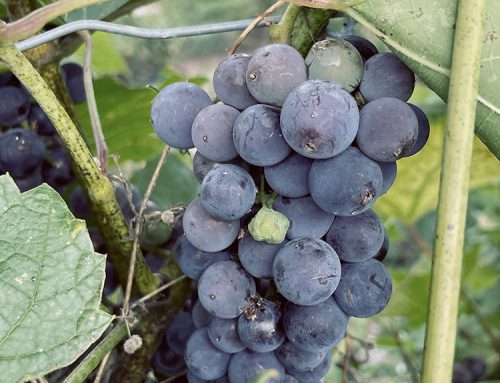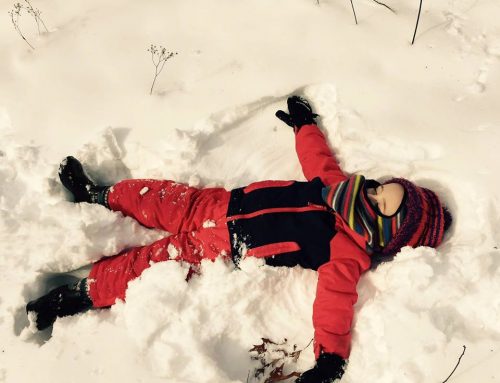As early childhood educators we are tasked with addressing not just the joyful parts of a child’s life, but also the more difficult. As naturalists we also have a healthy understanding of the circle of life. Some animals have distressingly short lifespans, from 2 years for a possum to only one week for a luna moth, and nature’s lifecycles cannot be changed.
“There is a beginning
and an ending for everything
that is alive.
In between is living.”
Being with children in nature on a daily basis means we experience the cycles of life first hand and gives us a unique opportunity to practice deep emotional skills with children. In her thoughtful article, Children and Grief: The Role of Early Childhood Educator, Andrea Hopkins describes role of the educator or parent as “to help the child feel safe while acknowledging the reality of death. By accepting the child’s view of death as part of their growing curiosity about and understanding of everyday phenomena we validate true and normal human emotions.” In our daily travels around the nature center, we have stumbled upon the severed leg of a deer strewn along the trail by a passing coyote, watched helplessly as a snake devoured a frog and in turn observed an owl flying overhead to their babies in the nest with a limp snake in it’s talons. We have encountered a beautiful dead wood thrush that died by striking a window and observed squirrels on the side of the road. In all these cases the children observe these things before we can hide or sanitize the view and indeed we shouldn’t try. Nature provides the lesson, but also the comfort.
Teachers need to promote an accepting atmosphere where feelings are supported. One of the best ways to do this is to listen and follow the child. “Play is an effective means for a child to work through grief… acting out death, dying and funerals helps reduce anxiety and should be supported rather than avoided by the teacher.” We have seen this first hand in the classroom. We have engaged with children as they have spent weeks building coffins out of blocks for dolls as they work through the loss of a loved one, we have reflected fondly when children talk about their long-lost dog and we listen intently when a child role plays the life of a mouse caught by an owl. This is not based in some morbid or gory fascination but a developmentally appropriate way to help children begin to the process of understanding what death means.
Talking about, acting out and striving to understand death is an incredibly important part of supporting children and helping them grow emotionally and cognitively. To hide or ignore this fact of life leads children to fear it even more than they already do. Learning about death is a natural part of life in nature. Even the smallest bug snatched up by a spider deserves respect as it provides life to another. The spider would die without eating the bug. Everything has a lifetime and a purpose and addressing death with honesty, acknowledging death with respect and providing dignity in our remembrance helps children give meaning to death and can help them process more difficult deaths when they come. “While early childhood educators may wish to protect children from negative or painful experiences, they are also aware that one of their primary tasks is to help children deal with strong emotions in healthy ways.”
This week we said goodbye to our beloved nature center animal ambassador Hop Hop. Recently he had gone off his food and seemed uncomfortable. We gave him pain medication to make him comfortable and overnight he died peacefully and with dignity.
Hop Hop came to the DPNC Preschool from Terra Firma Farm where he was originally bred as a meat rabbit. He was however born with a deformed front leg and was very docile after being handled by many children at the farm and so he was spared his intended fate. Farmer Brie gave him to our school when he was about a year old after our former rabbit, Bun Bun, died. That means Hop Hop was at least 8 years old and certainly won the rabbit lottery. Ms. Lori took particular care with Hop Hop, sharing bits of her daily banana and even building him his new obstacle-free home in the preschool office when we retired him from the classroom this summer. Hop Hop spent his retirement relaxing on his ‘porch’ and was a good boy enjoying healthy treats of any kind of leafy green, flavorful root veggie scraps and of course bananas. Hop Hop did a tremendous service for DPNC as an animal ambassador. More golden retriever than rabbit, he enjoyed lounging on the carpet while the children played around him. He calmly welcomed children every day and gave comfort to those who needed support when missing mom and dad. He will be buried alongside his predecessors Bun Bun, Clover and Buttercup. We wish this old boy a fond farewell and thank all staff and volunteers who have helped to care for him over the years and all the children who have loved him.
We recommend the wonderful book, Lifetime: The Beautiful way to Explain Death to Children by Bryan Mellonie and Robert Ingpen to families helping young children with loss (quoted here and above ). This out of print book can be found online and is simple in its poetry like repetition.
“Rabbits and mice grow up in only
A few weeks. Then they go on to live
For a year or two, crunching up carrots
And nibbling at cheese until they grow
Old and very tired and it is
Their time to die.
That is how it happens to be
For rabbits and mice.
It is the way they live, and it is their lifetime.”






